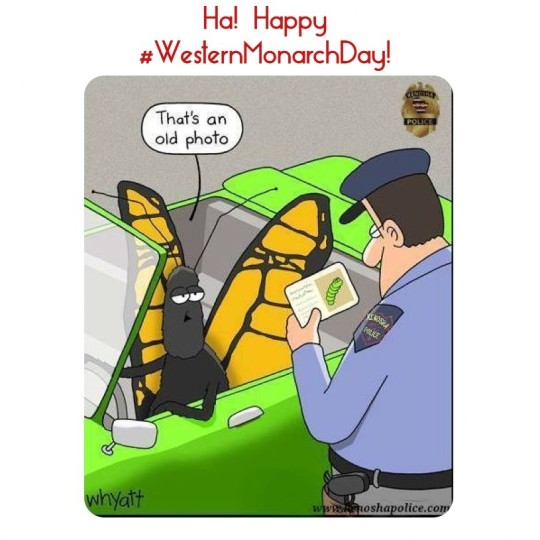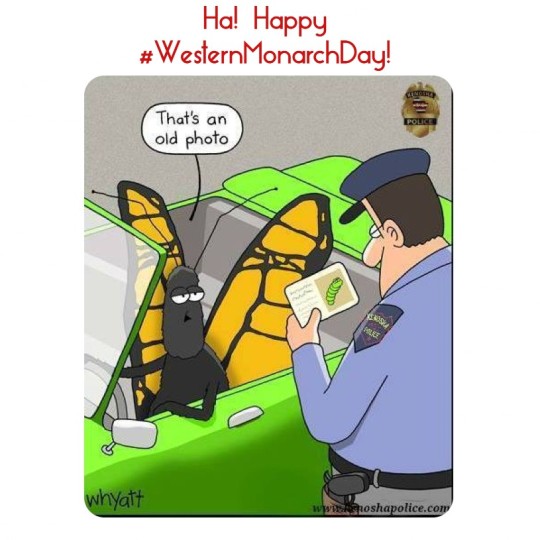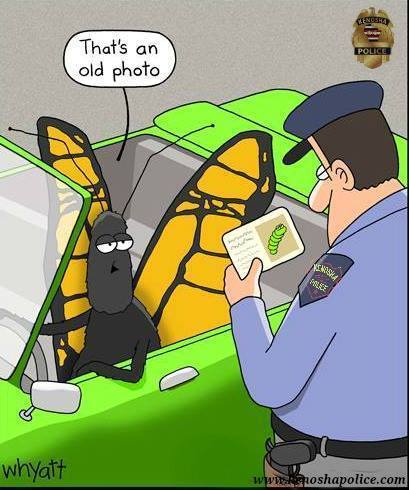#WesternMonarchDay
Text
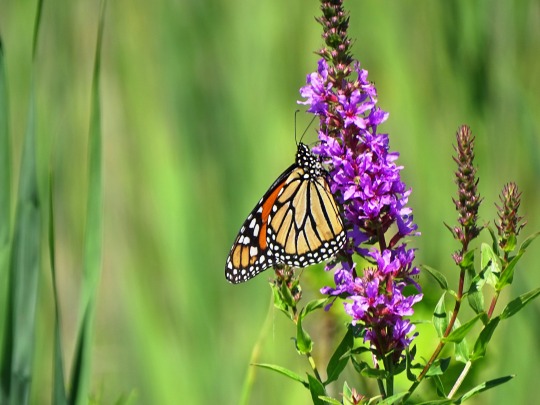

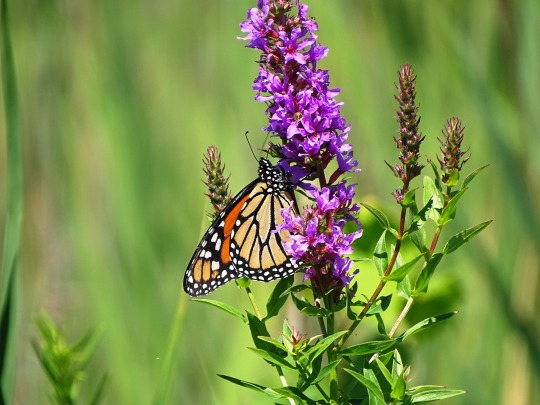
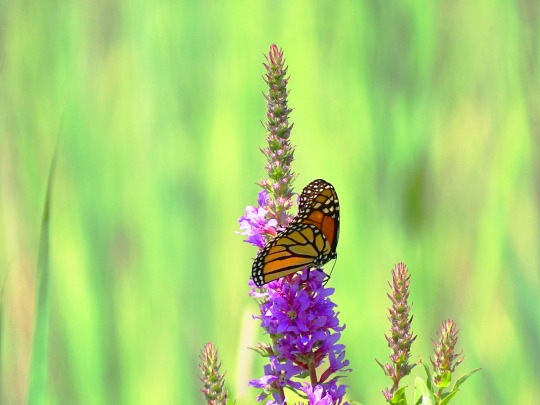


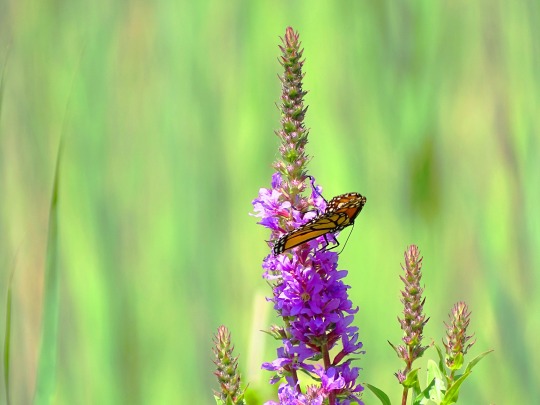
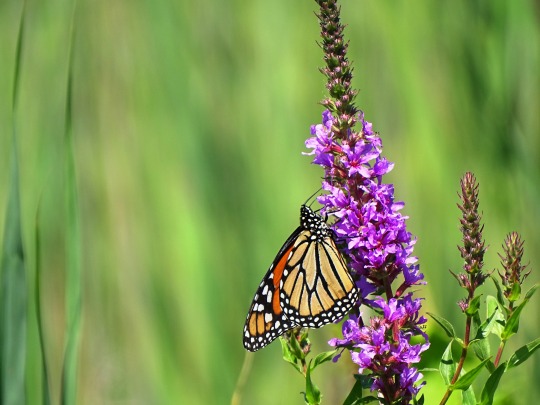
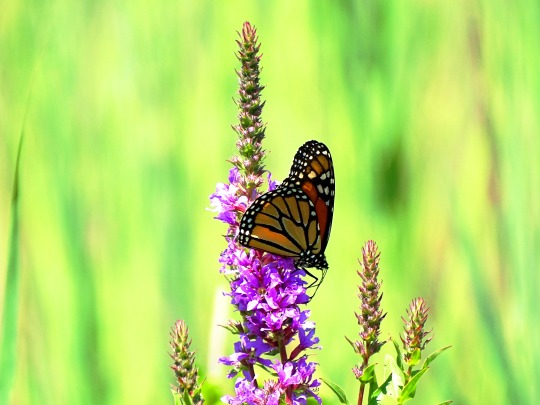
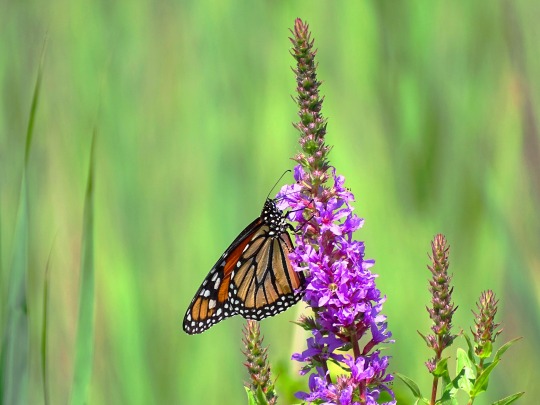

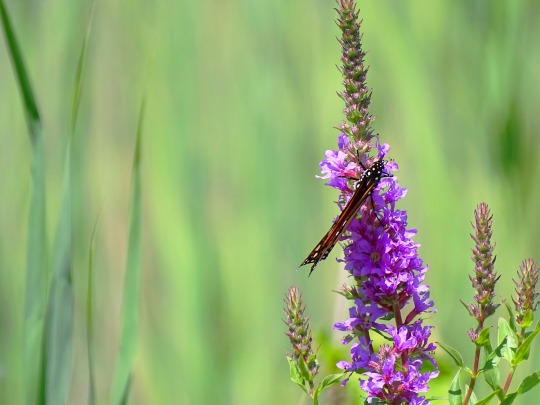
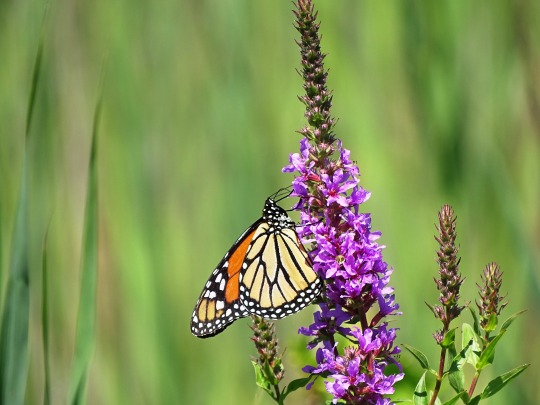
(California) Western Monarch Day
California Western Monarch Day, known informally as Western Monarch Day, was established by the California State Legislature in 2004. The day celebrates the annual migration of the Western monarch butterfly during the winter months—from about October through March—to California's central coast, the only major overwintering spot in the world for the butterflies. The holiday was established with the understanding that it would positively impact tourism and educational programs. Indeed, many visitors come to the area during the migration, boosting tourism at a time of the year when it is otherwise sluggish.
Events are held around the state of California on the day or on a nearby date. In past years, an event has been held at the Mile Square Regional Park in Fountain Valley, California; a "citizen science butterfly count" led by the Irvine Ranch Conservancy has been held at the nearby Limestone Canyon, and the largest celebration in the state has been held at the Pismo Beach State Monarch Butterfly Grove in Pismo Beach. One of the most popular destinations for butterflies in the state, and one of the largest butterfly colonies in North America, Pismo Beach regularly has over 20,000 monarch butterflies clustering in its tall eucalyptus trees.
In addition to Pismo Beach, monarch butterfly groves can also be found in Nipomo, Los Osos, and Morro Bay. In Nipomo, at the Monarch Dunes Butterfly Habitat, up to 60,000 monarchs visit each winter, and make their homes in a grove of blue gum eucalyptus trees. There are two groves in Los Osos: Monarch Grove Natural Area and Sweet Springs Nature Preserve. Monarch Grove Natural Area is made up of 18 acres and is located at the end of Monarch Lane. Sweet Springs Nature Preserve is made up of 24 acres and is located on the Morro Bay estuary. It has been managed by the Morro Coast Audubon Society since 1989. In nearby Morro Bay, Morro Bay Golf Course Monarch Butterfly Grove can be found at the center of Morro Bay Golf Course. Monarchs sometimes come to the grove of eucalyptus trees by as early as August and cluster themselves low on the branches.
As monarchs can't survive cold northern climates, they migrate to warmer climates, sometimes traveling a distance of over 1,000 miles. One of the only insects that migrate, they do so twice a year—like birds do—traveling to a warmer climate and then back again. Western monarchs live west of the Rockies. During the summer months, they can be found in canyons or near rivers in the West, Southwest, and inland in states from California all the way up to British Columbia. A few can be found on the coastal Pacific Northwest as well. Numbering in the tens of thousands, they migrate west and south, mainly nesting in California's central coast. Eastern monarchs, which far outnumber their Western counterparts, live east of the Rockies and migrate south to the high mountains of central Mexico. Monarchs can also be found in Hawaii, Puerto Rico, New Zealand, and on some islands in the Caribbean; those butterflies do not migrate.
Monarchs start as caterpillars. They subsist only on milkweed, a plant that produces glycoside toxins. The caterpillars are immune to the toxins, but predators are not, and are deterred from feasting on the caterpillars because the toxins get stored up in the caterpillars' bodies and make them taste bad. The caterpillars grow and molt for two weeks, form a chrysalis in which they complete metamorphosis, and turn into butterflies. As butterflies, the toxins are still in their systems, still protecting them.
Most adult butterflies only live for a few weeks. During that time, they subsist on nectar from many kinds of plants, search for mates, and look for milkweed on which to lay their eggs. The last generation of monarchs hatch in late summer, and they may live as long as eight months. They don't reach sexual maturity right away and instead make the fall migration. Despite never making the journey before, they know exactly where to go. They remain inactive during the coldest months, but around March, they become sexually mature and then mate. They die soon afterward, and their offspring finish the migration back north.
Between the 1990s and the end of the 2010s, the monarch population declined by about 90 percent, largely on account of habitat fragmentation and loss. Both urban development and intensive agriculture took a toll on habitats. In addition, herbicides killed the milkweed and nectar plants the butterflies feed off of, and insecticides killed the monarchs themselves. Lastly, climate change altered weather patterns and the timing of migration. Because of the drop in monarch numbers, it seems all the more pressing to have a holiday dedicated to them and to the beauty and the mystery of their yearly migration.
How to Observe California Western Monarch Day
Many events are held on or around the date and can be attended if you are able to travel to California. You could check to see if an event is being held at Mile Square Regional Park in Fountain Valley, where in past years butterfly experts have educated and answered questions, and native plants have been available to plant. You could see if the Irvine Ranch Conservancy is hosting a "citizen science butterfly count" at Limestone Canyon. The best place to go for an event is Pismo Beach State Monarch Butterfly Grove in Pismo Beach (the event may be held on a nearby Saturday). At this event, there are butterfly talks and educational booths for adults, and art activities for children. The biggest part of it, of course, are the thousands of monarchs that can be seen hanging in clusters from eucalyptus and pine trees. The grove usually opens in October and stays open throughout the month of February, and docents can be found giving daily talks. You could also visit other butterfly groves today, such as the Monarch Dunes Butterfly Grove in Nipomo, the Monarch Grove Natural Area or Sweet Springs Nature Preserve in Los Osos, or the butterfly grove in the Morro Bay Golf Course. If you can't travel to California, there are still ways you can celebrate. You could take part in the National Wildlife Federation's Garden for Wildlife program, and plant a habitat garden with milkweed and nectar plants for returning monarchs to enjoy. Planting locally native species of plants is the best. Look over some regional guides so you know what to plant in the area you live. You could take part in Butterfly Heroes, another program of the National Wildlife Federation, which is designed to help kids and families raise awareness about declining populations, and to help them to get involved in helping monarchs and other butterflies. The National Wildlife Federation is working to save and restore monarch habitats, and more could be learned about it. You could also learn about the number of Western monarchs in California with Western Monarch Count, encourage your mayor to take the Mayors' Monarch Pledge, or could watch a documentary about monarch migration.
Source
#Western Monarch Day#WesternMonarchDay#California Western Monarch Day#CaliforniaWesternMonarchDay#5 February#butterfly#insect#wildlife#animal#original photography#flora#fauna#Indiana#Midwestern USA#Great Lakes Region#Wolf Lake Memorial Park#Verbena stricta#purple loosestrife#tourist attraction#landmark#countryside#wildflower#blooming#grass#nature#vacation#travel#summer 2019#USA#Hammond
0 notes
Text
Western Monarch Day Messages and Greetings
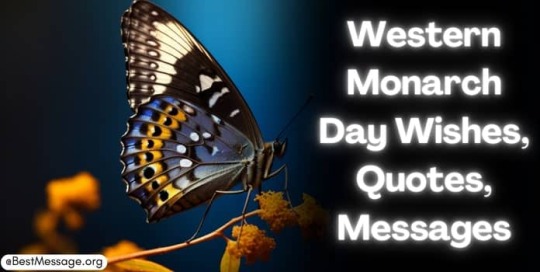
This day is all about celebrating the Western Monarch butterflies which are known for their epic migration. Here is the collection of Happy Western Monarch Day greeting cards and wishes. Share on Facebook, Instagram and WhatsApp the Western Monarch Day captions and statuses.
#WesternMonarchDay#WesternMonarchDayGreetings#WesternMonarchDayMessages#WesternMonarchDaySayings#WesternMonarchDayStatus#WesternMonarchDayWishes
0 notes
Text
Celebration Western Monarch Day February 5, 2021
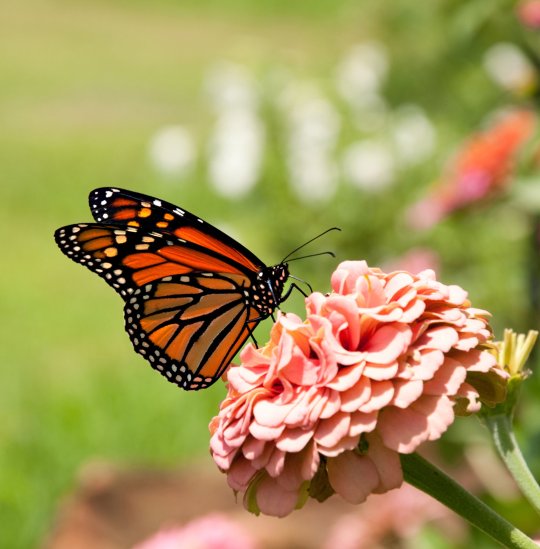
Get out your tiara 26wait no! It 19s not that day. It is Western Monarch Day. It is a day to celebrate the Western Monarch butterfly. It travels from place to place but this day specifically we give thanks for their return to the central California coast. Why is this so important? It is important to watch and make sure that they do return. The monarch butterfly is facing a terrific decline in numbers.
Many conservation groups are calling for it to be protected as an endangered species and claim that the number of declines could be as high as 90%!
History of Western Monarch Day
The Monarch butterfly is a stunning mix of grace and beauty. With rich tones of gold, red, yellow and orange they fly across the landscape and take over the job of pollination. They somehow know when it is time to move. Their migration can be tracked from north and east to south and west, and then back again.
Amazingly each way of the migration takes four generations! Can you imagine? Taking into account how much they pollinate, and the fact that their migration takes such a toll on their population it is imperative to understand what their decline really means. Can you picture the toll when I say the decline of Monarch population is near 90%? Let me share a visual with you. Let 19s talk people instead of insects. If we were to make a comparison, the loss to the butterfly would be as if all the people in the United States of America died except for those in Ohio and Florida. Stunning isn 19t it?
With that picture in mind, can you now see why there is a Western Monarch Day? A day to bring awareness to this frightening decline? A day to find a way to make a difference!
How to celebrate Western Monarch Day
Did you know that if we all took a few simple actions we could help to save the Western Monarch Butterfly? Currently, three conservation groups are working to get endangered status and protection for this creature, but is it enough? No. It isn 19t. So what can I do you ask? Great question!
One way is to share a little bit of your yard with them. The main plant that they need is milkweed. This plant is critical to their survival along the migration routes that they take. It provides nectar as well as the fact that it is the only plant in which the Monarch butterfly can lay their eggs in. In the Midwest of the United States of America, this plant is quickly disappearing as more and more land is being used for farming.
If you go to https://www.livemonarch.com/free-milkweed-seeds you can help by planting these free seeds. Give the butterflies a rest in your garden and you can help to ensure their continued well 13 being. When they come to feast and lay their eggs, you will be able to help document their numbers if you choose. But better yet you can enjoy their beauty knowing you have helped them!
Special deals to celebrate Western Monarch Day!
College Board Coupon: Up to $8 Off With Minimum Spend on All Used Books - Textbook Flash Sale! Get $2 Off $20 Or $4 Off $30 Or $8 Off $40 on All Used Books. Starts 01/18/2021 at 9:00 AM ET.
Burger King Canada Discount: Buy 1 Get 1 Free Croissanwich - Tap offer to copy the coupon code. Remember to paste code when you check out. Online only.
Boombah Offer: 10% Off Sitewide - Tap offer to copy the coupon code. Remember to paste code when you check out. Online only.
Boombah Coupon: 10% Off Sitewide - Tap offer to copy the coupon code. Remember to paste code when you check out. Online only.
Bookbyte Deal: 5% Off All Books Rental & Purchases - Get 5% off all books rental & purchases. Ends 08/23/2015
CORE Foods Promo Code: Free First Box With Corefoods Email Sign Up - No coupon code needed. Prices as marked. Tap to shop the sale now.
Bookbyte Coupon: 5% Off All Books Rental & Purchases - Get 5% off all books rental & purchases. Ends 08/23/2015
0 notes
Text
youtube
🎵 Things Must Change 🎵
#DepecheMode - #TheSunAndTheRainfall (#CyborgRemix by #Dominatrix)
#WesternMonarchDay!
0 notes
Text

Today, February 5, 2024, is #WesternMonarchDay!
(https://nationaltoday.com/western-monarch-day)
a #Painting I painted a couple of years ago:
‘#Monarch #Butterfly #Factory’
#MidCenturyModern #Abstract #PopArt
2017, acrylic and oil blend on canvas, 16"x20"
by @ArtistJamieRoxx #JamieRoxx (www.JamieRoxx.us)
This Sold Painting is Not Available
0 notes
Video
youtube
🎵 Things Must Change 🎵
#DepecheMode - #TheSunAndTheRainfall (#CyborgRemix by #Dominatrix)
#WesternMonarchDay!
0 notes
Photo

Today, February 5, 2023 is #WesternMonarchDay!
(https://nationaltoday.com/western-monarch-day)
a #Painting I painted a couple of years ago:
‘#Monarch #Butterfly #Factory’
#MidCenturyModern #Abstract #PopArt
2017, acrylic and oil blend on canvas, 16"x20"
by @ArtistJamieRoxx #JamieRoxx (www.JamieRoxx.us)
This Sold Painting is Not Available
0 notes
Photo
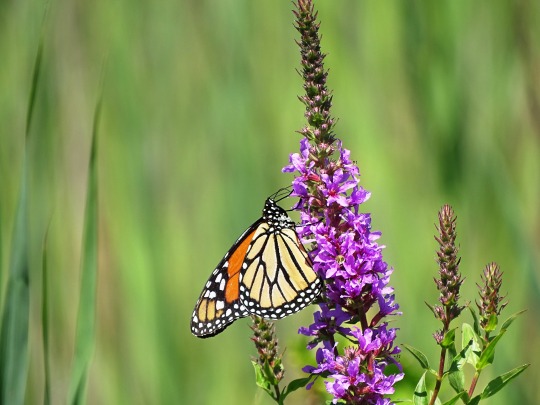

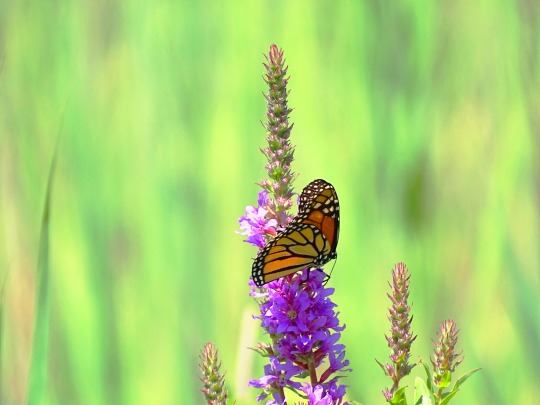
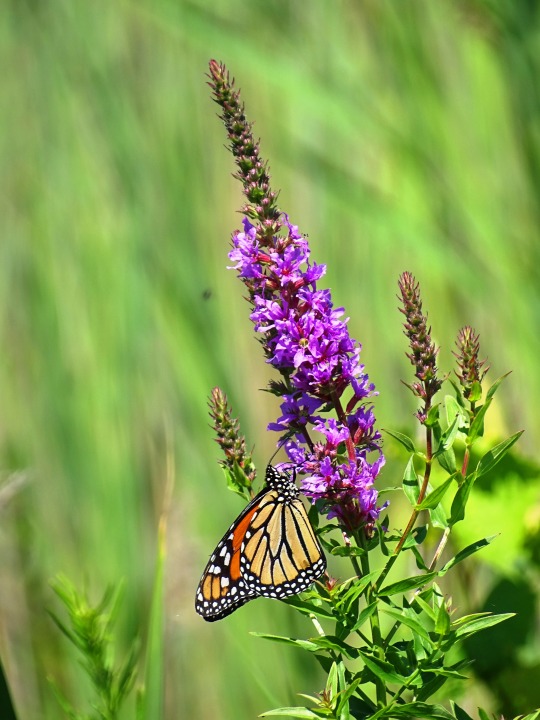


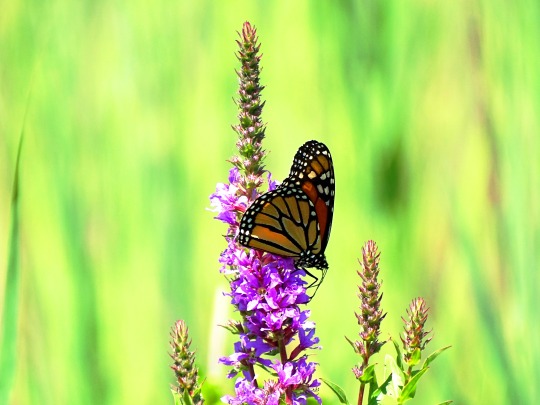
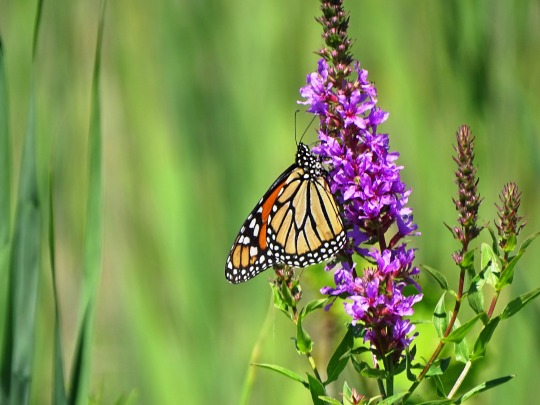
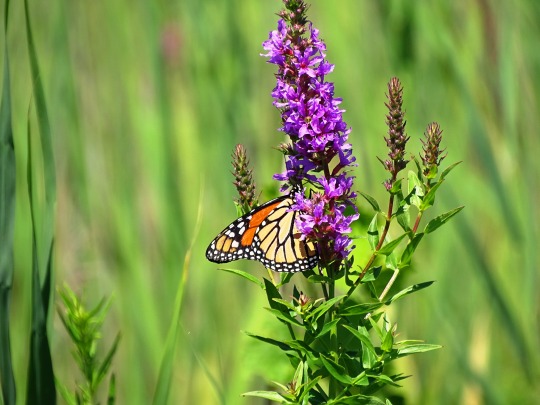
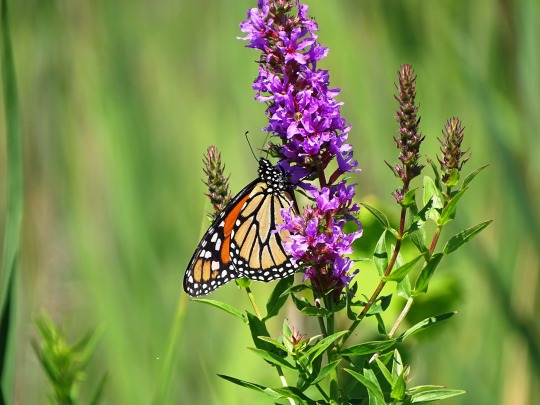
Western Monarch Day
Get out your tiara…wait no! It’s not that day. It is Western Monarch Day. It is a day to celebrate the Western Monarch butterfly. It travels from place to place but this day specifically we give thanks for their return to the central California coast. Why is this so important? It is important to watch and make sure that they do return. The monarch butterfly is facing a terrific decline in numbers.
Many conservation groups are calling for it to be protected as an endangered species and claim that the number of declines could be as high as 90%!
History of Western Monarch Day
The Monarch butterfly is a stunning mix of grace and beauty. With rich tones of gold, red, yellow and orange they fly across the landscape and take over the job of pollination. They somehow know when it is time to move. Their migration can be tracked from north and east to south and west, and then back again.
Amazingly each way of the migration takes four generations! Can you imagine? Taking into account how much they pollinate, and the fact that their migration takes such a toll on their population it is imperative to understand what their decline really means. Can you picture the toll when I say the decline of Monarch population is near 90%? Let me share a visual with you. Let’s talk people instead of insects. If we were to make a comparison, the loss to the butterfly would be as if all the people in the United States of America died except for those in Ohio and Florida. Stunning isn’t it?
With that picture in mind, can you now see why there is a Western Monarch Day? A day to bring awareness to this frightening decline? A day to find a way to make a difference!
How to celebrate Western Monarch Day
Did you know that if we all took a few simple actions we could help to save the Western Monarch Butterfly? Currently, three conservation groups are working to get endangered status and protection for this creature, but is it enough? No. It isn’t. So what can I do you ask? Great question!
One way is to share a little bit of your yard with them. The main plant that they need is milkweed. This plant is critical to their survival along the migration routes that they take. It provides nectar as well as the fact that it is the only plant in which the Monarch butterfly can lay their eggs in. In the Midwest of the United States of America, this plant is quickly disappearing as more and more land is being used for farming.
If you go to https://www.livemonarch.com/free-milkweed-seeds you can help by planting these free seeds. Give the butterflies a rest in your garden and you can help to ensure their continued well – being. When they come to feast and lay their eggs, you will be able to help document their numbers if you choose. But better yet you can enjoy their beauty knowing you have helped them!
Source
#Western Monarch Day#WesternMonarchDay#5 February#insect#butterfly#original photography#vacation#summer 2019#Midwestern USA#Whiting#Wolf Lake Memorial Park#Indiana#flora#fauna#wildflower#blooming#close up#national day#Great Lakes Region#USA#colors
1 note
·
View note
Photo

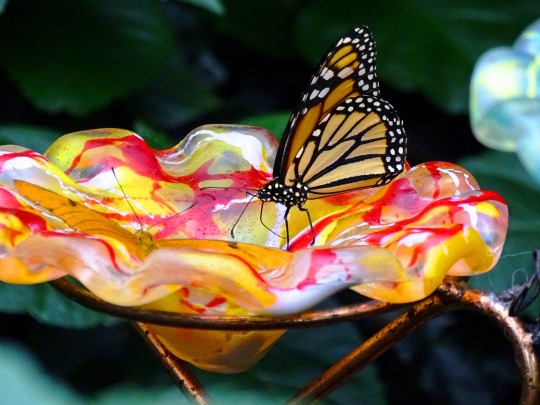
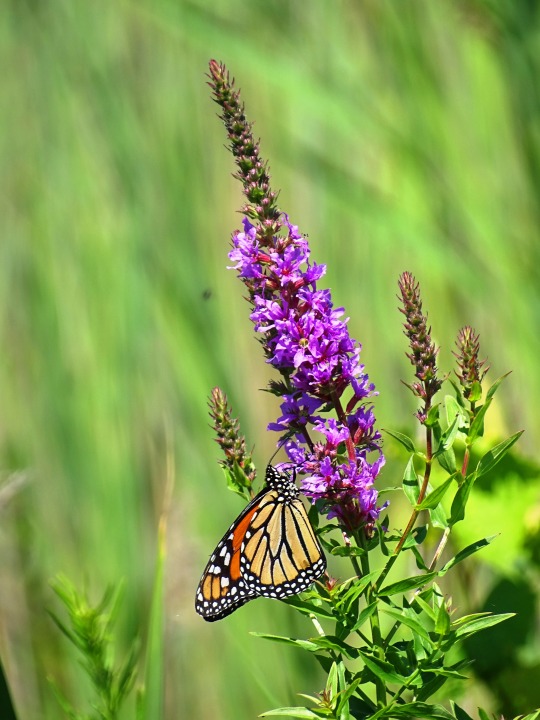
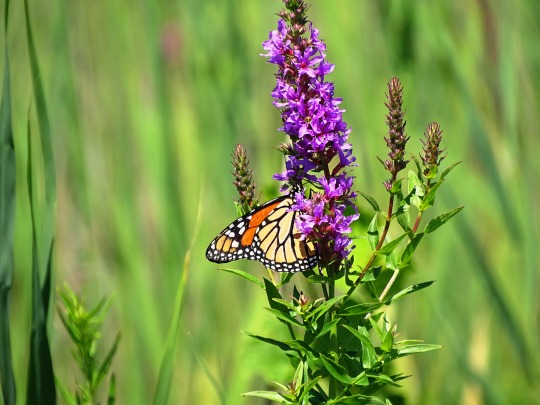
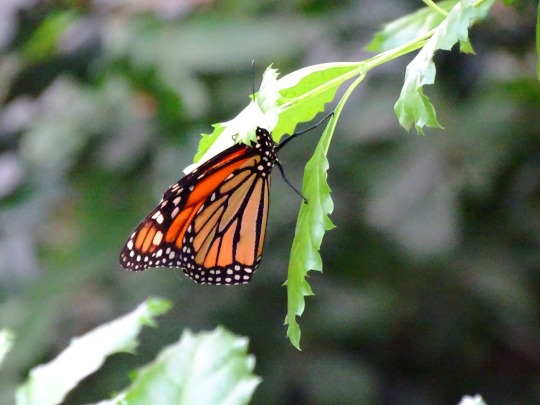
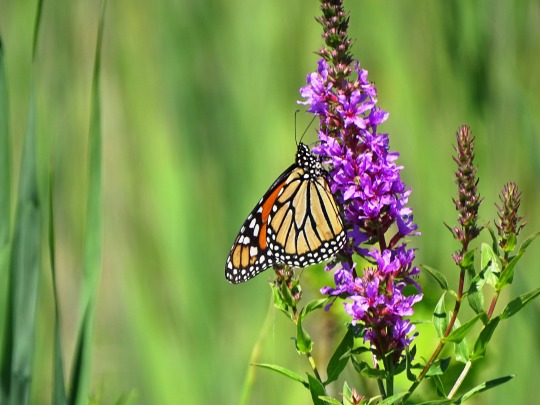
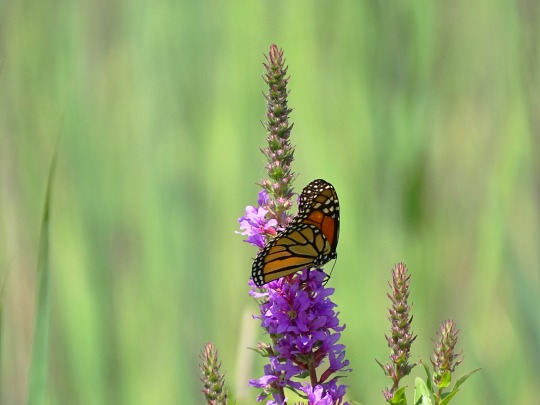
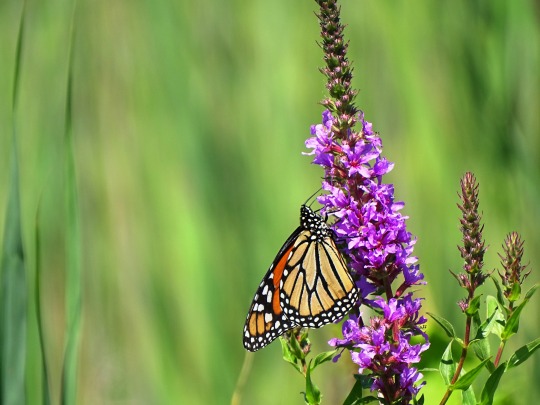

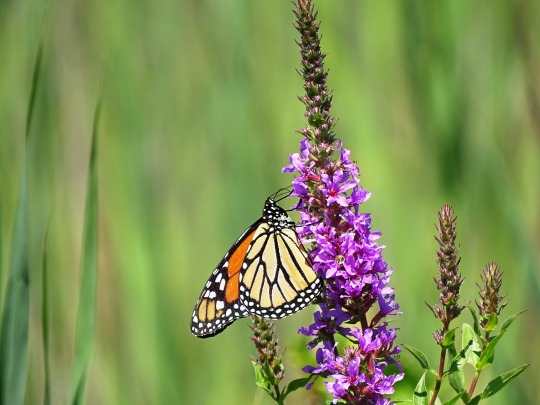
Western Monarch Day
Get out your tiara…wait no! It’s not that day. It is Western Monarch Day. It is a day to celebrate the Western Monarch butterfly. It travels from place to place but this day specifically we give thanks for their return to the central California coast. Why is this so important? It is important to watch and make sure that they do return. The monarch butterfly is facing a terrific decline in numbers.
Many conservation groups are calling for it to be protected as an endangered species and claim that the number of declines could be as high as 90%!
History of Western Monarch Day
The Monarch butterfly is a stunning mix of grace and beauty. With rich tones of gold, red, yellow and orange they fly across the landscape and take over the job of pollination. They somehow know when it is time to move. Their migration can be tracked from north and east to south and west, and then back again.
Amazingly each way of the migration takes four generations! Can you imagine? Taking into account how much they pollinate, and the fact that their migration takes such a toll on their population it is imperative to understand what their decline really means. Can you picture the toll when I say the decline of Monarch population is near 90%? Let me share a visual with you. Let’s talk people instead of insects. If we were to make a comparison, the loss to the butterfly would be as if all the people in the United States of America died except for those in Ohio and Florida. Stunning isn’t it?
With that picture in mind, can you now see why there is a Western Monarch Day? A day to bring awareness to this frightening decline? A day to find a way to make a difference!
How to celebrate Western Monarch Day
Did you know that if we all took a few simple actions we could help to save the Western Monarch Butterfly? Currently, three conservation groups are working to get endangered status and protection for this creature, but is it enough? No. It isn’t. So what can I do you ask? Great question!
One way is to share a little bit of your yard with them. The main plant that they need is milkweed. This plant is critical to their survival along the migration routes that they take. It provides nectar as well as the fact that it is the only plant in which the Monarch butterfly can lay their eggs in. In the Midwest of the United States of America, this plant is quickly disappearing as more and more land is being used for farming.
If you go to https://www.livemonarch.com/free-milkweed-seeds you can help by planting these free seeds. Give the butterflies a rest in your garden and you can help to ensure their continued well – being. When they come to feast and lay their eggs, you will be able to help document their numbers if you choose. But better yet you can enjoy their beauty knowing you have helped them!
Source
#Bronx Zoo#New York City#summer 2018#original photography#insect#Monarch Butterfly#wildlife#Wolf Lake#Indiana#summer 2019#travel#USA#vacation#nature#fauna#flora#wildflower#purple#Western Monarch Day#WesternMonarchDay#5 February#orange#green#Wolf Lake Memorial Park#Butterfly Garden#Whiting#Midwestern USA
2 notes
·
View notes
Photo
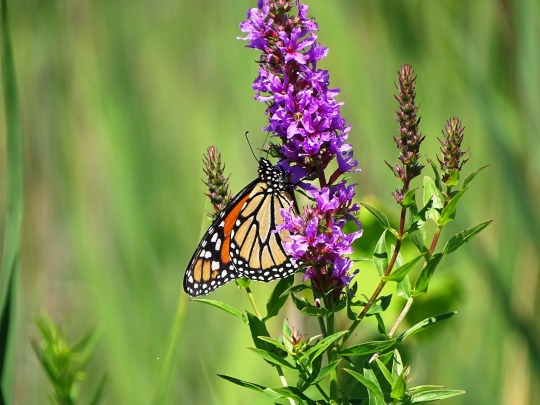
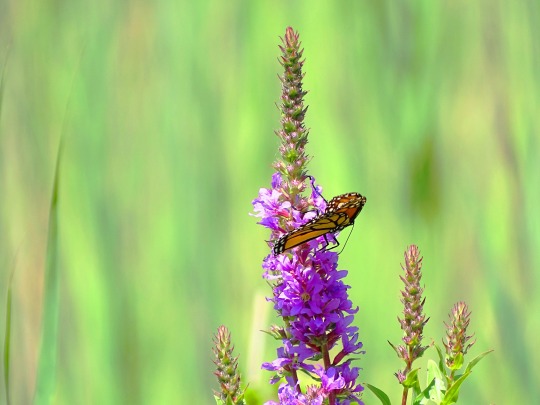
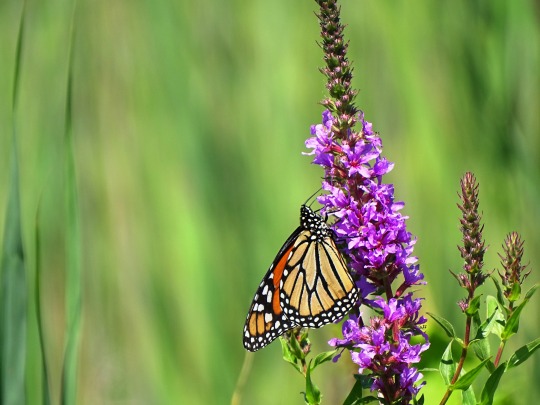
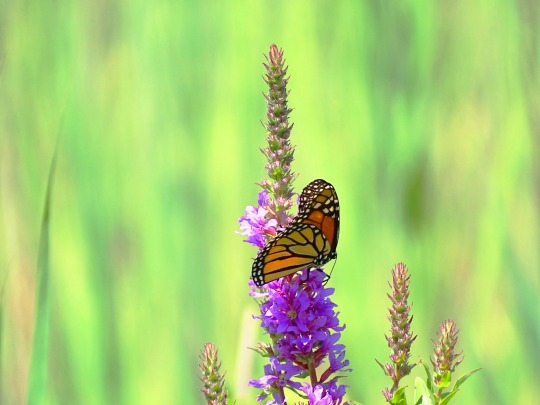
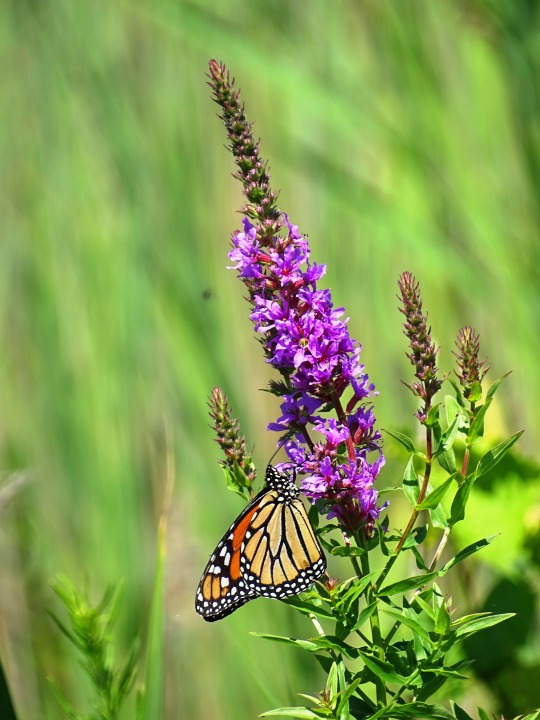
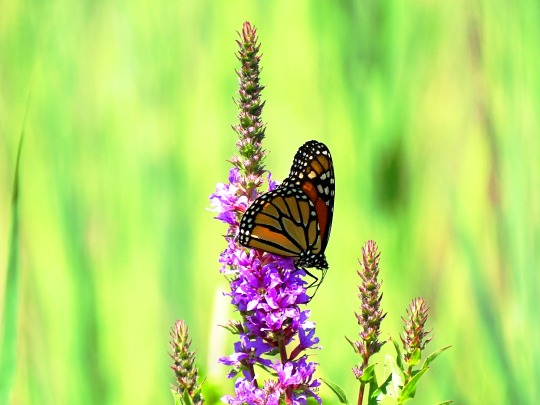

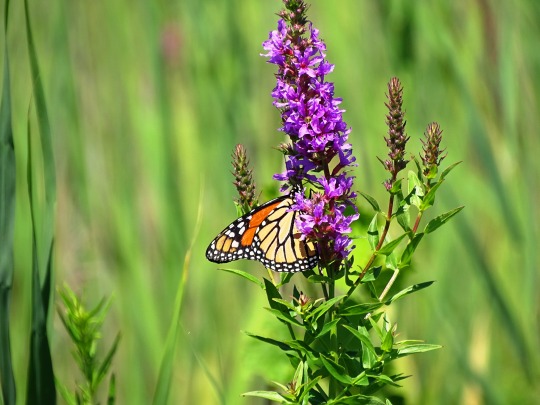
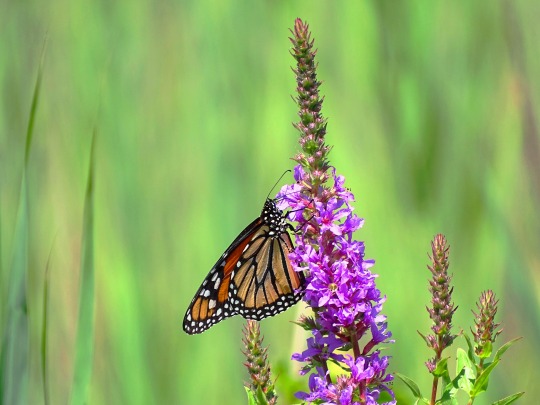

California Western Monarch Day
California Western Monarch Day, known informally as Western Monarch Day, was established by the California State Legislature in 2004. The day celebrates the annual migration of the Western monarch butterfly during the winter months—from about October through March—to California's central coast, the only major overwintering spot in the world for the butterflies. The holiday was established with the understanding that it would positively impact tourism and educational programs. Indeed, many visitors come to the area during the migration, boosting tourism at a time of the year when it is otherwise sluggish.
Events are held around the state of California on the day or on a nearby date. In past years, an event has been held at the Mile Square Regional Park in Fountain Valley, California; a "citizen science butterfly count" led by the Irvine Ranch Conservancy has been held at the nearby Limestone Canyon, and the largest celebration in the state has been held at the Pismo Beach State Monarch Butterfly Grove in Pismo Beach. One of the most popular destinations for butterflies in the state, and one of the largest butterfly colonies in North America, Pismo Beach regularly has over 20,000 monarch butterflies clustering in its tall eucalyptus trees.
In addition to Pismo Beach, monarch butterfly groves can also be found in Nipomo, Los Osos, and Morro Bay. In Nipomo, at the Monarch Dunes Butterfly Habitat, up to 60,000 monarchs visit each winter, and make their homes in a grove of blue gum eucalyptus trees. There are two groves in Los Osos: Monarch Grove Natural Area and Sweet Springs Nature Preserve. Monarch Grove Natural Area is made up of 18 acres and is located at the end of Monarch Lane. Sweet Springs Nature Preserve is made up of 24 acres and is located on the Morro Bay estuary. It has been managed by the Morro Coast Audubon Society since 1989. In nearby Morro Bay, Morro Bay Golf Course Monarch Butterfly Grove can be found at the center of Morro Bay Golf Course. Monarchs sometimes come to the grove of eucalyptus trees by as early as August and cluster themselves low on the branches.
As monarchs can't survive cold northern climates, they migrate to warmer climates, sometimes traveling a distance of over 1,000 miles. One of the only insects that migrate, they do so twice a year—like birds do—traveling to a warmer climate and then back again. Western monarchs live west of the Rockies. During the summer months, they can be found in canyons or near rivers in the West, Southwest, and inland in states from California all the way up to British Columbia. A few can be found on the coastal Pacific Northwest as well. Numbering in the tens of thousands, they migrate west and south, mainly nesting in California's central coast. Eastern monarchs, which far outnumber their Western counterparts, live east of the Rockies and migrate south to the high mountains of central Mexico. Monarchs can also be found in Hawaii, Puerto Rico, New Zealand, and on some islands in the Caribbean; those butterflies do not migrate.
Monarchs start as caterpillars. They subsist only on milkweed, a plant that produces glycoside toxins. The caterpillars are immune to the toxins, but predators are not, and are deterred from feasting on the caterpillars because the toxins get stored up in the caterpillars' bodies and make them taste bad. The caterpillars grow and molt for two weeks, form a chrysalis in which they complete metamorphosis, and turn into butterflies. As butterflies, the toxins are still in their systems, still protecting them.
Most adult butterflies only live for a few weeks. During that time, they subsist on nectar from many kinds of plants, search for mates, and look for milkweed on which to lay their eggs. The last generation of monarchs hatch in late summer, and they may live as long as eight months. They don't reach sexual maturity right away and instead make the fall migration. Despite never making the journey before, they know exactly where to go. They remain inactive during the coldest months, but around March, they become sexually mature and then mate. They die soon afterward, and their offspring finish the migration back north.
Between the 1990s and the end of the 2010s, the monarch population declined by about 90 percent, largely on account of habitat fragmentation and loss. Both urban development and intensive agriculture took a toll on habitats. In addition, herbicides killed the milkweed and nectar plants the butterflies feed off of, and insecticides killed the monarchs themselves. Lastly, climate change altered weather patterns and the timing of migration. Because of the drop in monarch numbers, it seems all the more pressing to have a holiday dedicated to them and to the beauty and the mystery of their yearly migration.
How to Observe California Western Monarch Day
Many events are held on or around the date and can be attended if you are able to travel to California. You could check to see if an event is being held at Mile Square Regional Park in Fountain Valley, where in past years butterfly experts have educated and answered questions, and native plants have been available to plant. You could see if the Irvine Ranch Conservancy is hosting a "citizen science butterfly count" at Limestone Canyon. The best place to go for an event is Pismo Beach State Monarch Butterfly Grove in Pismo Beach (the event may be held on a nearby Saturday). At this event, there are butterfly talks and educational booths for adults, and art activities for children. The biggest part of it, of course, are the thousands of monarchs that can be seen hanging in clusters from eucalyptus and pine trees. The grove usually opens in October and stays open throughout the month of February, and docents can be found giving daily talks. You could also visit other butterfly groves today, such as the Monarch Dunes Butterfly Grove in Nipomo, the Monarch Grove Natural Area or Sweet Springs Nature Preserve in Los Osos, or the butterfly grove in the Morro Bay Golf Course.
If you can't travel to California, there are still ways you can celebrate. You could take part in the National Wildlife Federation's Garden for Wildlife program, and plant a habitat garden with milkweed and nectar plants for returning monarchs to enjoy. Planting locally native species of plants is the best. Look over some regional guides so you know what to plant in the area you live. You could take part in Butterfly Heroes, another program of the National Wildlife Federation, which is designed to help kids and families raise awareness about declining populations, and to help them to get involved in helping monarchs and other butterflies. The National Wildlife Federation is working to save and restore monarch habitats, and more could be learned about it. You could also learn about the number of Western monarchs in California with Western Monarch Count, encourage your mayor to take the Mayors' Monarch Pledge, or could watch a documentary about monarch migration.
Source
#Western Monarch Day#WesternMonarchDay#California Western Monarch Day#CaliforniaWesternMonarchDay#5 February#butterfly#insect#wildlife#animal#original photography#flora#fauna#Indiana#Midwestern USA#Great Lakes Region#Wolf Lake Memorial Park#Verbena stricta#purple loosestrife#tourist attraction#landmark#countryside#wildflower#blooming#grass#nature#vacation#travel#summer 2019
1 note
·
View note
Photo

Today, February 5, 2022 is #WesternMonarchDay!
(https://happydays-365.com/western-monarch-day/western-monarch-day-february-5/)
a #Painting I painted a couple of years ago:
‘#Monarch #Butterfly #Factory’
#MidCenturyModern #Abstract #PopArt
2017, acrylic and oil blend on canvas, 16"x20"
by @ArtistJamieRoxx #JamieRoxx (www.JamieRoxx.us)
This Sold Painting is Not Available
0 notes
